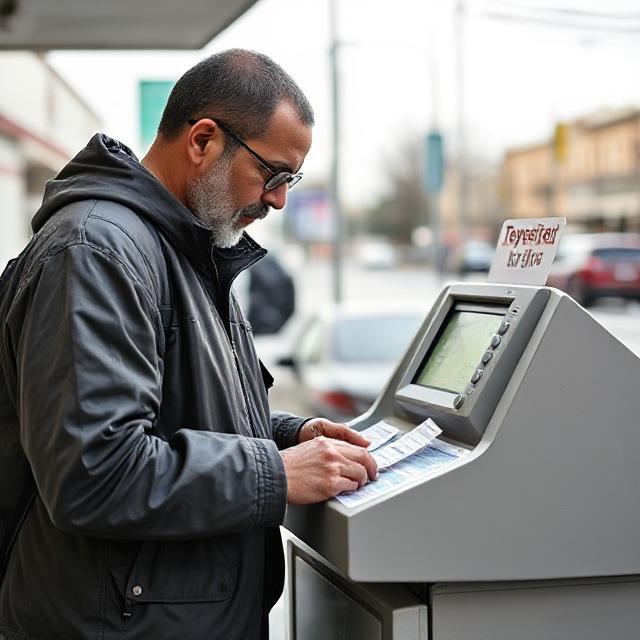The Life of a 35-Year-Old Taxpayer in India: Burdened, Overlooked, and Still Standing Strong
India’s middle class — the backbone of the nation’s economy — contributes the most in taxes, fuels consumption, and sustains the country’s growth story. Yet, their voices remain unheard.
A 35-year-old taxpayer in India today represents financial resilience, emotional exhaustion, and silent sacrifice. From paying taxes and EMIs to dealing with toxic air and poor infrastructure, this section of society lives under immense pressure, often without any safety net when things fall apart.
Let’s take a hard look at the everyday reality of this generation — those who work hard, pay every bill on time, and yet live one emergency away from financial collapse.
1. The Salary That Never Feels Enough
1.1 Taxes Bite Hard
A 35-year-old private employee earning ₹1 lakh a month feels proud of their success — until they open their payslip. Nearly 30% of their income disappears as taxes:
- Income Tax
- Professional Tax
- GST (on every purchase made afterward)
While the taxpayer diligently pays these, the visible return on this contribution is close to zero — no free healthcare, no guaranteed education support, and no social protection during crises.
1.2 The Salary Mirage
Out of ₹1 lakh, here’s what typically happens:
- ₹30,000 – Income Tax and deductions
- ₹25,000 – Home Loan EMI
- ₹15,000 – School Fees
- ₹10,000 – Groceries
- ₹5,000 – Electricity, internet, fuel
- ₹5,000 – Medical & miscellaneous
- ₹10,000 – Savings (if possible)
What remains? Almost nothing.
And yet, this taxpayer is told they belong to the “privileged class.”
2. The Cost of Living: A Monthly Race Against EMIs
2.1 Living on Credit
For most 35-year-olds in India, debt is not a choice — it’s a lifestyle.
- A home loan spanning 20 years
- A car loan for convenience
- A personal loan for emergencies
- Credit cards to handle month-end gaps
The cycle never ends. You earn, you pay, and you borrow again.
2.2 The Emotional Price of EMIs
Each EMI isn’t just a payment — it’s a silent reminder of economic pressure.
One missed paycheck or a sudden layoff can bring the entire financial pyramid crashing down.
Yet, there’s no government helpline, no relief, no policy that acknowledges this silent crisis.
3. Paying Tolls for Potholes: Infrastructure Irony
Every morning, as our 35-year-old taxpayer drives to work, they cross multiple toll plazas — paying ₹100 or more daily.
What do they get in return?
Pothole-ridden roads, endless traffic jams, and vehicles breaking down due to poor maintenance of public infrastructure.
Tolls were introduced to fund road quality. But when the same roads resemble obstacle courses after every monsoon, it feels like a tax on inconvenience.
3.1 The Double Payment Trap
- Pay road tax while buying a vehicle.
- Pay fuel tax every time you refill.
- Pay toll tax to use the same road.
And yet, you drive on broken asphalt and false promises.
This is the irony of being a law-abiding Indian taxpayer — paying for things you never get.
4. The School Fees Reality: Education Becoming a Luxury
4.1 A Costlier Future
Private schooling for one child now costs ₹1.5–2 lakh per year in major cities. Add tuition, transportation, and extracurriculars, and the cost rises further.
For two children, education becomes a financial battlefield, consuming up to 25–30% of household income.
4.2 Quality vs. Cost
Despite the rising costs, quality education often remains questionable.
Parents pay lakhs for schools that:
- Don’t have enough qualified teachers
- Prioritize marketing over learning
- Demand “donations” or “activity charges”
Education — once a symbol of hope — has now become a financial obligation.
5. Breathing 500+ AQI Air: The Silent Tax on Health
5.1 The Air We Breathe
In cities like Delhi, Gurugram, or Mumbai, AQI levels often exceed 500.
This means our taxpayer breathes toxic air equivalent to smoking 30 cigarettes a day.
He pays for health insurance, buys air purifiers, and still wakes up coughing.
5.2 Healthcare Costs: Paying to Stay Alive
Private healthcare remains out of reach for many, and government hospitals are overwhelmed.
Even a basic check-up can cost thousands, and one serious illness can wipe out years of savings.
6. Eating Fake Paneer: Everyday Consumer Deception
The modern Indian market is flooded with adulterated food — fake paneer, synthetic milk, colored sweets, and pesticide-laden vegetables.
Consumers pay premium prices for poison, and there’s little recourse.
Regulatory systems fail to protect even basic consumption safety — leaving citizens to rely on trial and error for survival.
6.1 Health and Cost Paradox
Despite spending thousands on “organic” alternatives, quality remains inconsistent.
There’s no centralized consumer redressal for adulterated food — another silent battle that the taxpayer fights alone.
7. Job Insecurity: Fired Without a Safety Net
7.1 When the Paycheck Stops
One ordinary day, the 35-year-old taxpayer gets called into a meeting room and is handed a pink slip.
No fault of theirs — just “restructuring” or “cost optimization.”
After years of paying taxes, EMIs, and contributions, there’s no government helpline, no unemployment benefit, and no support system to rely on.
7.2 The Harsh Reality
India’s private sector jobs are at-will employment — meaning, you can be terminated at any time without real protection.
Once unemployed:
- EMIs continue
- Rent continues
- School fees continue
- But income stops
The system expects resilience but provides no safety net.
8. The Invisible Burden: Mental and Emotional Toll
8.1 Silent Stress Epidemic
India’s working professionals are silently battling anxiety, depression, and burnout.
Juggling financial, professional, and family responsibilities creates an invisible load that’s rarely discussed.
8.2 No Support System
Mental health remains stigmatized and underfunded.
While billions are spent on infrastructure projects, mental health helplines for the middle class barely exist.
This psychological exhaustion is the true cost of modern living in India.
9. No Helpline, No Hope: The Void of Accountability
When the 35-year-old taxpayer finally breaks — financially or emotionally — and looks for help, they find nothing.
There’s no government helpline dedicated to:
- Job loss support
- Debt management
- Emotional counseling
- Citizen grievance resolution
In a system that celebrates billion-dollar startups and free schemes, the middle-class taxpayer stands unrepresented and invisible.
10. The Bigger Picture: The Forgotten Majority
10.1 The Economic Backbone
India’s middle class forms over 30% of the population and contributes nearly 70% of income tax revenue.
They are:
- The workforce behind every private sector company
- The consumers driving GDP
- The parents funding education, healthcare, and the next generation
Yet, they have no subsidy, no social welfare, and no policy focus.
10.2 The Inequality Gap
Government schemes often target:
- Below poverty line (BPL) citizens
- Large corporates through incentives
But the tax-paying middle class — the “sandwich generation” — is neither poor enough for aid nor rich enough for comfort.
11. The Systemic Problem: Tax Without Welfare
India’s taxation model is collection-heavy but benefit-light.
Unlike countries where taxpayers receive public services in return, Indian taxpayers see little direct return on their contribution.
Examples:
- Poor public healthcare
- Crumbling infrastructure
- Underfunded schools
- Inconsistent electricity and water supply
You pay for everything twice — once through taxes, and again privately.
12. What Needs to Change
12.1 Policy-Level Reforms
- Tax Rebate for the Middle Class — Realistic deductions for education, healthcare, and EMIs.
- Job Loss Insurance — A government-backed unemployment support system.
- Accountability for Infrastructure Spending — Public audit of toll and tax utilization.
- Mental Health & Citizen Helpline — Accessible 24/7 government support for working citizens.
- Education Regulation — Caps on private school fees and transparency in costs.
12.2 Social Reforms
- Shift public discourse to appreciate taxpayers, not guilt them.
- Create community networks for peer support and financial awareness.
- Encourage corporate responsibility in layoffs and reemployment.
13. Despite It All: The Spirit of Resilience
Even after all the stress, the 35-year-old taxpayer wakes up the next day, commutes to work, and continues.
They hope that someday, the system they support will start supporting them back.
This resilience — quiet, constant, and powerful — keeps India running.
Disclaimer
This article is for informational and educational purposes only. It reflects general socioeconomic conditions and does not intend to criticize any individual, institution, or government. The views expressed here represent a broader societal reality faced by India’s middle class. Readers are encouraged to form their own opinions and engage in constructive dialogue about policy and reform. This is not financial or political advice.












